Affiliate links on Android Authority may earn us a commission. Learn more.
Best of Android 2017: Which phone has the best display?
Published onDecember 11, 2017
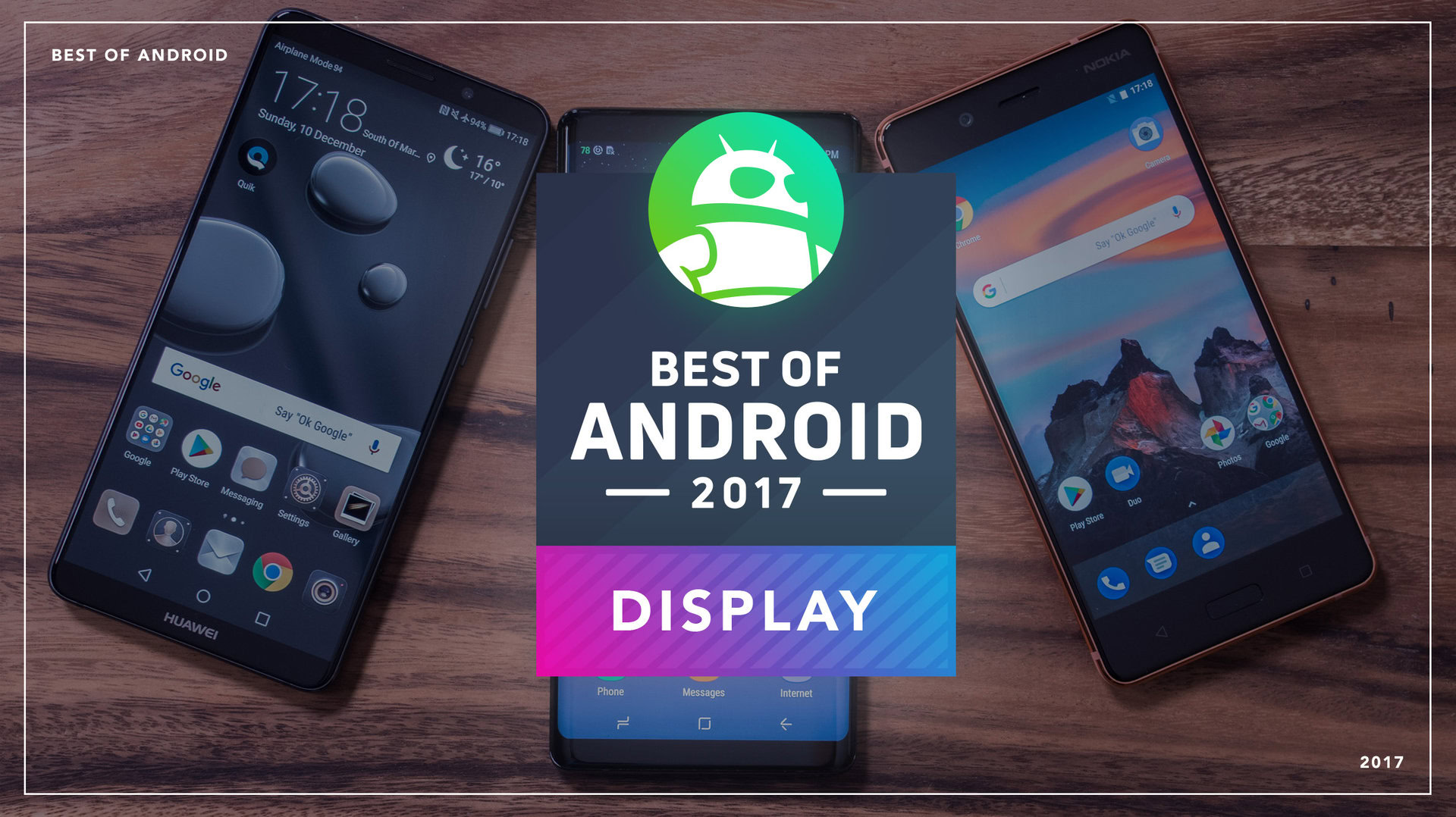
Welcome to the first installment of Best of Android 2017, our in-depth search to find out which smartphone is the best of the year. This segment kicks off with the most obvious thing on all devices — the screen. Which screen has the best colors? Which one looks the best? Which is the most accurate? Let’s find out.
What is Best of Android?
In Best of Android, we take the most important smartphones of the year and compare them side-by-side and in-depth. This year, with smartphones hitting $1,000 for the first time, we’ve made our search broader and deeper than ever before!
For 2018, we’ve introduced an all-new 50+ point testing process that will shape our reviews and provide one of the most comprehensive looks at Android smartphones. In anticipation of that, we’ve bought this testing to Best of Android 2017. After putting ten of the latest flagships through their paces, we’re going to crown one Phone of the Year.
The phones we’re featuring in our third annual Best of Android comparison are:
- BlackBerry KEYone Black Edition
- Google Pixel 2 XL
- HUAWEI Mate 10 Pro
- LG V30
- Lenovo Moto Z2 Force
- Nokia 8
- OnePlus 5T
- Razer Phone
- Samsung Galaxy Note 8
- Sony Xperia XZ1
Let’s kick things off with the display.
Display Luminance
Starting off our display testing is luminance or maximum brightness in other words. This is a particularly handy metric if you’re looking for a smartphone display that’s easy to view in outdoor environments. It’s also becoming increasingly important for viewing HDR content on your display. Higher is better in both regards; a display has to be able to produce over 540 nits of peak brightness to meet the UHD Alliance Mobile HDR specification.
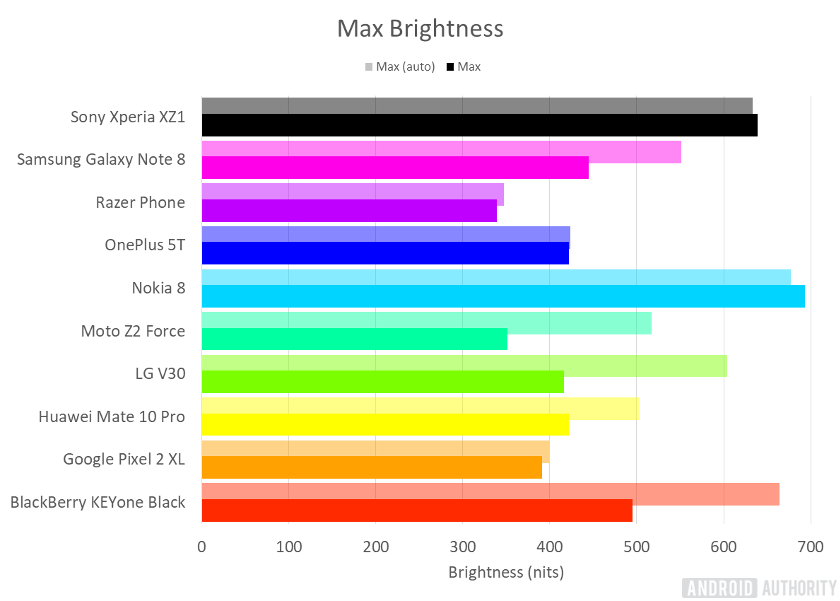
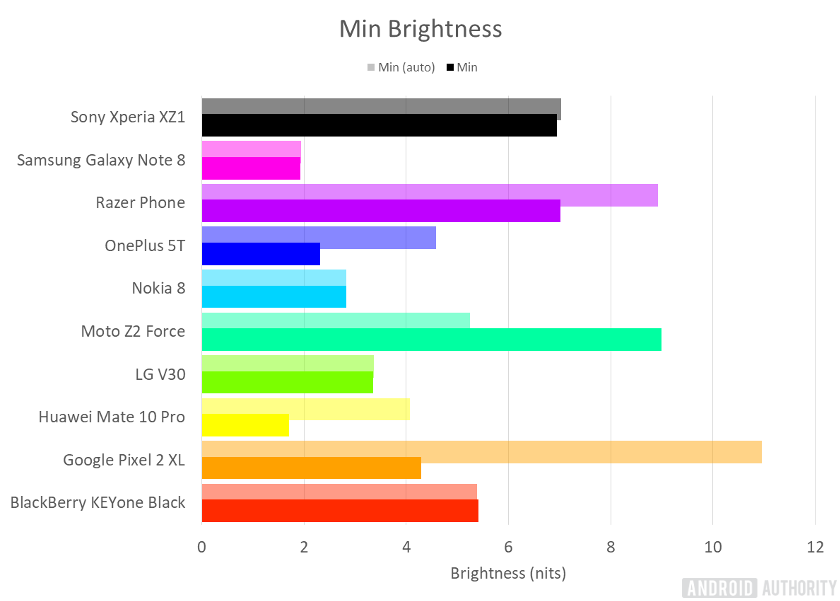
As we’ve seen in previous tests, a number of smartphones actually offer a higher peak brightness level when set in auto mode than when adjusted manually. The BlackBerry KEYone, HUAWEI Mate 10 Pro, LG V30, Moto Z Force, and Galaxy Note 8 all see notable boosts to their peak brightness when auto mode is enabled, pushing some of them into HDR capable territory.
Standard mode
We retested each smartphone that offered a standard, rather than adaptive, display mode to see if this made any difference. Out of the ten phones on the list, only four had separate standard modes: the HUAWEI Mate 10 Pro, OnePlus 5T, Samsung Galaxy Note 8 and the Sony Xperia XZ1. Other devices offered different modes for cool, warm, and color saturation.
For devices without a standard mode, we used the same data from the default, out-of-the-box state to provide some context and offer a comparison point.
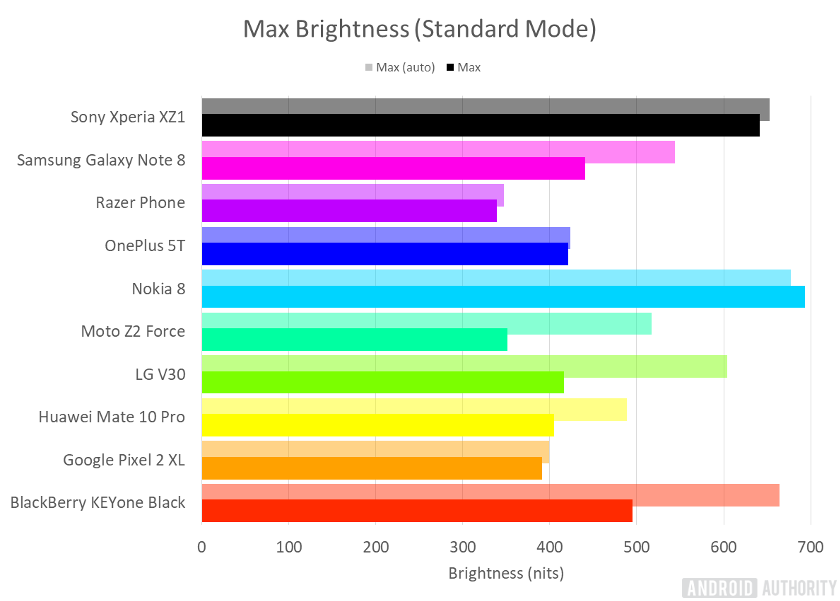
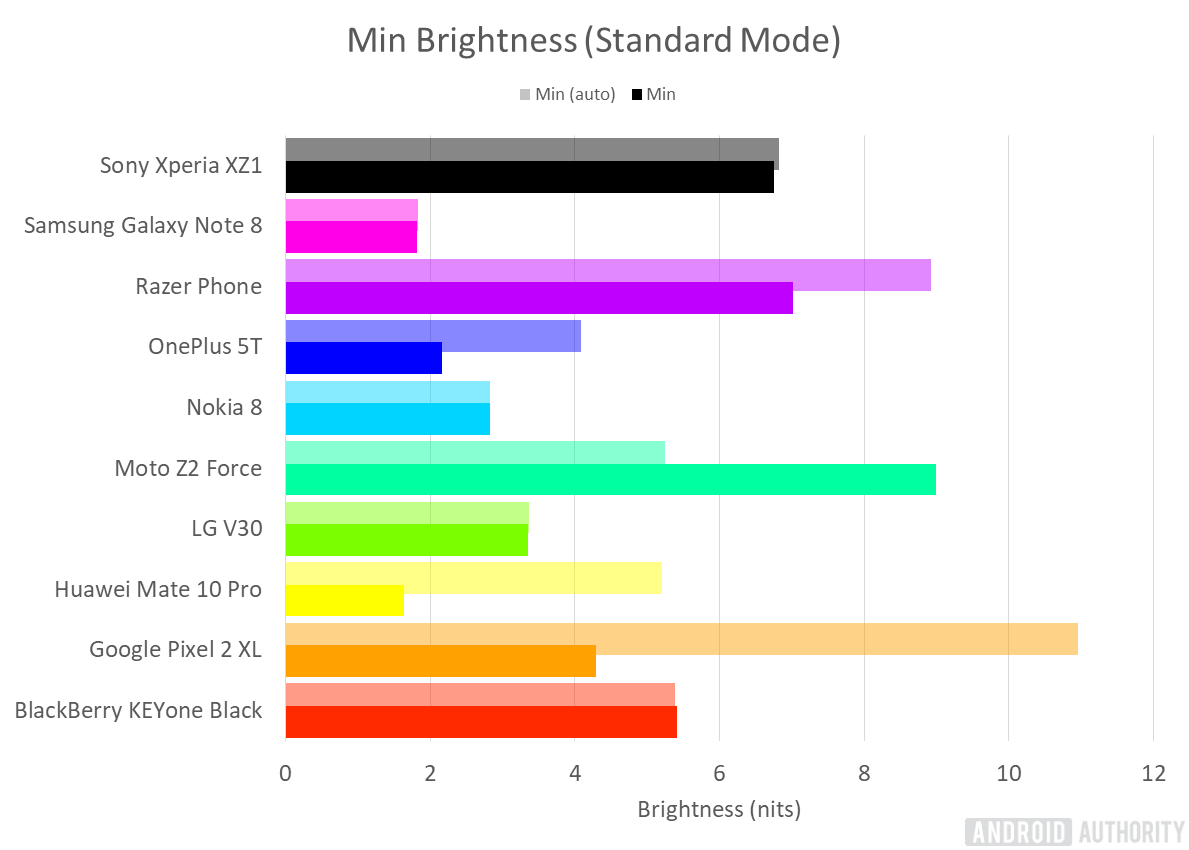
There are some minor differences in peak brightness between certain handsets when switching between display calibration modes, but it doesn’t amount to much. Auto mode holds much more sway here.
Overall, the Nokia 8 and BlackBerry KEYone have the brightest panels, at 677 and 664 nits respectively. These two are followed closely by the Sony Xperia XZ1, giving the top three places to phones with LCD panels. Our major OLED players, the V30, Note 8, and Pixel 2 XL, offer a wide variety of brightnesses, with the Pixel 2 XL scoring second lowest overall at just 399 nits.
The Galaxy Note 8 offers the lowest possible brightness setting, which might be handy to note if you’re looking to do some night reading or video watching.
Color Temperature
Color temperature refers to the degree to which a display tints towards a slightly cooler or warmer color. White LED comes in at around 5500 to 6000 kelvins. Temperatures below that produce a warmer, more orange hue, while 6500K and above looks cooler and more blue. The closer to white, the more neutral and accurate the look, although that isn’t always everyone’s preference.
We tested both default and standard color profiles, where available, to gain a better overview of what’s possible on each handset. This was a much sought-after feature by some, after Google’s Pixel 2 XL didn’t pack the typical punch consumers expected from OLED-type displays.
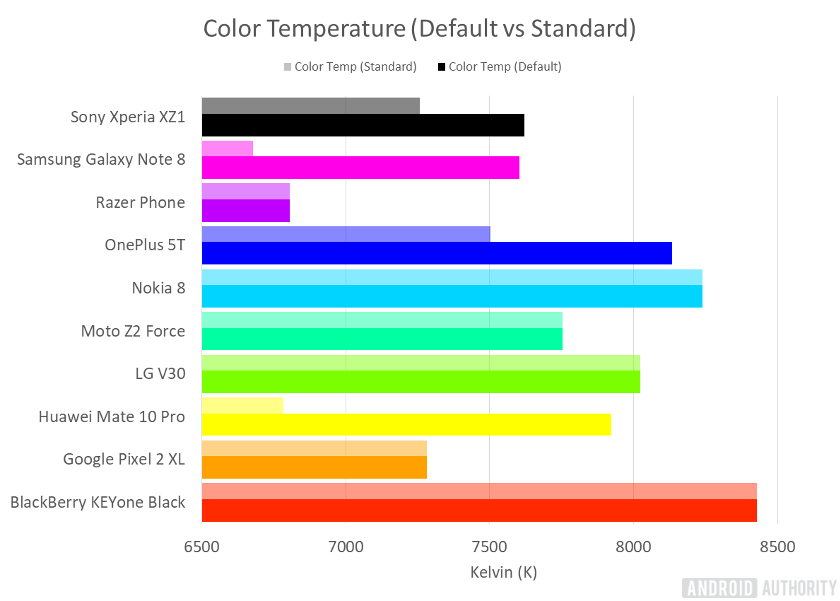
The BlackBerry KEYone, Nokia 8, and, perhaps surprisingly, LG V30 offer the coolest displays, meaning that this isn’t a phenomenon strictly limited to LCD technology. The Google Pixel 2 XL is notably warmer than the V30 despite using the same panel, suggesting this is a software calibration choice rather than a hardware characteristic. Samsung’s AMOLED is notably warmer, especially when switching the Note 8 to standard mode, which pushes it much closer to perfect white. The HUAWEI Mate 10 Pro and Razer Phone are the next two warmest looking phones, though the Mate 10 Pro is notably cooler in its out-of-the-box profile.
Overall, there’s a big range of white point colors across these flagships. However, a number of models allow for greater control over the look of their phones with different profiles. Interestingly, the Google Pixel 2 XL’s mode to boost colors doesn’t actually change the white point, unlike Samsung’s settings.
The best display is…
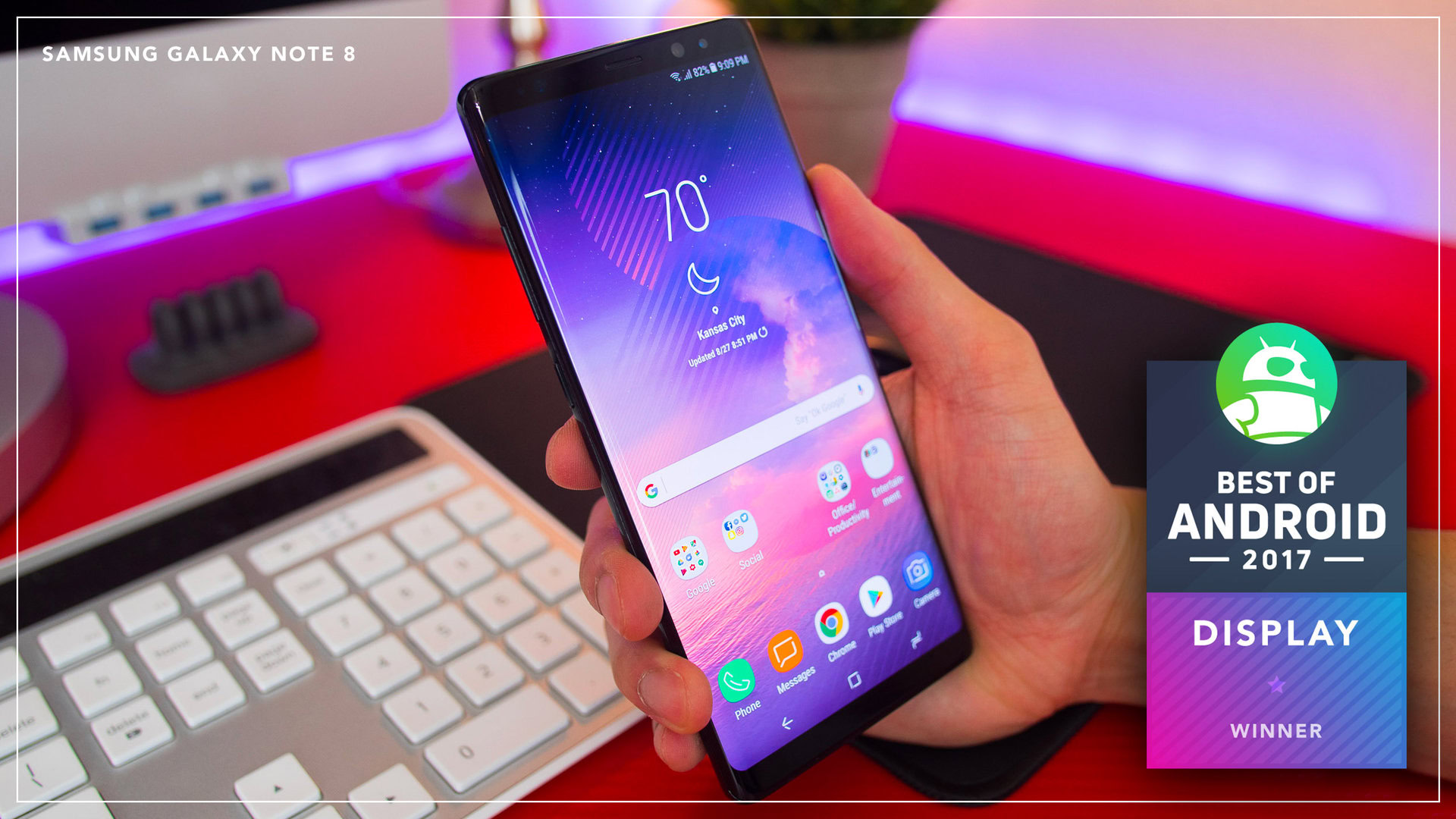
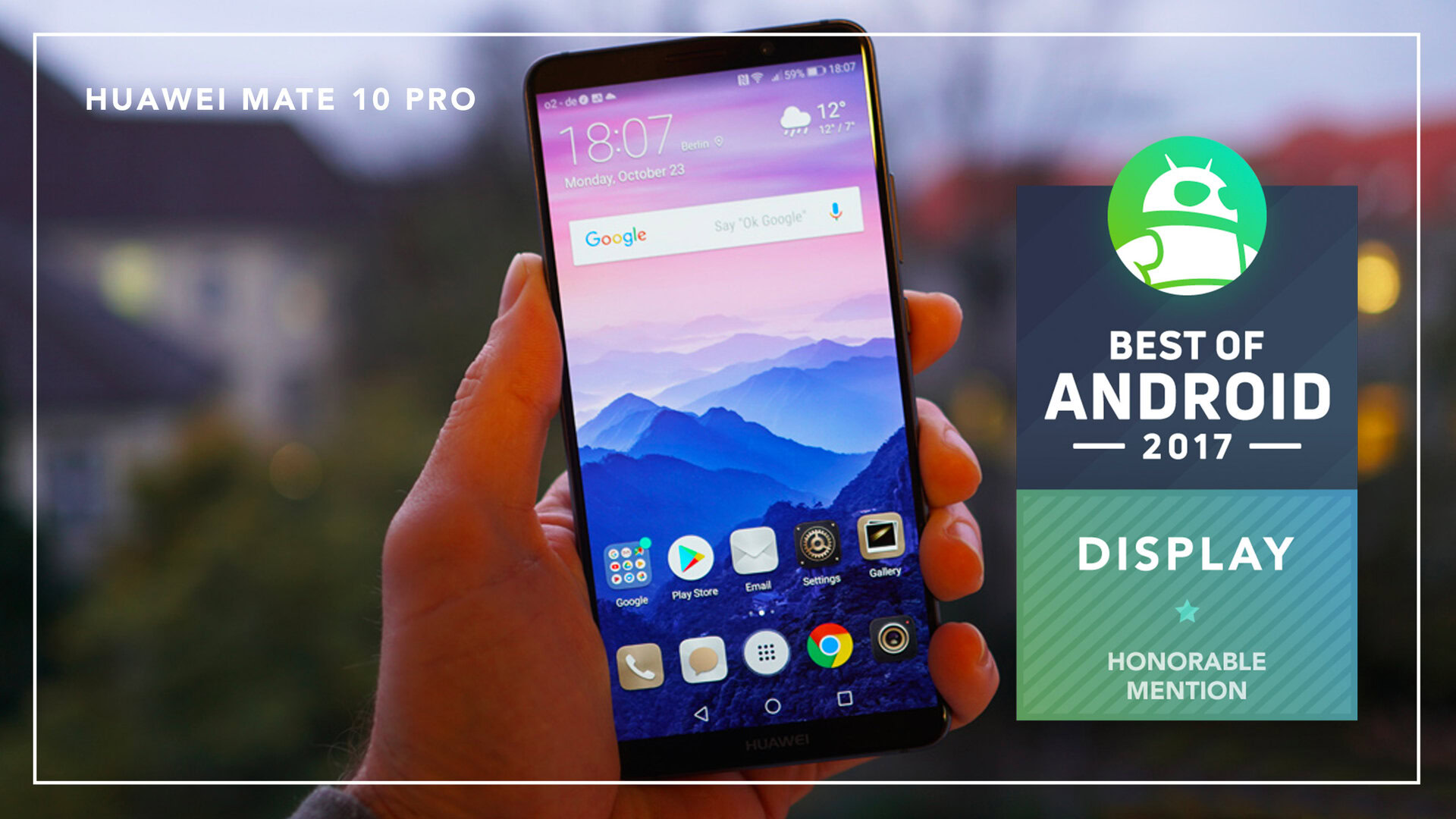
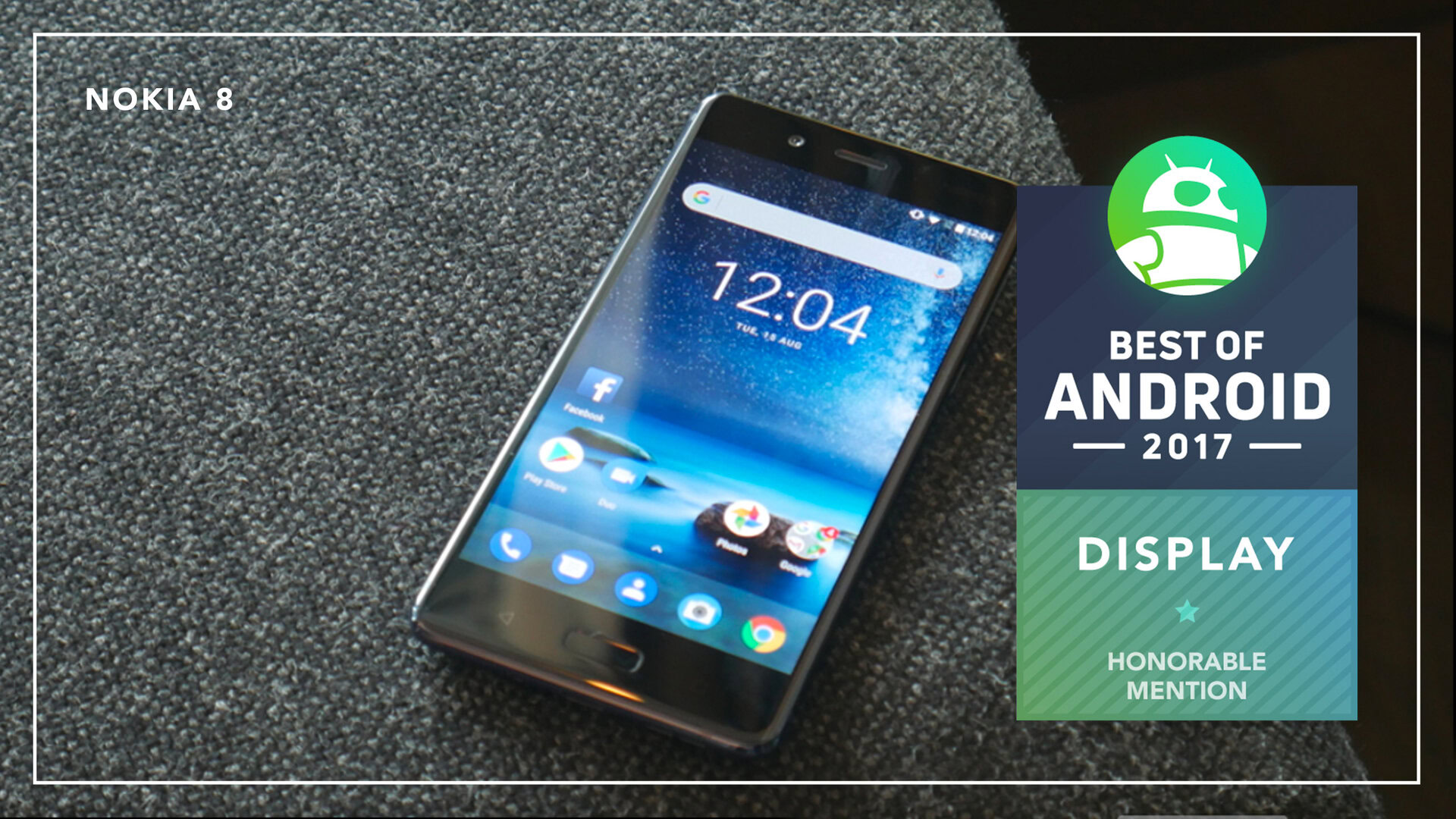
After our range of display tests, the Samsung Galaxy Note 8 came out on top. It performed well across all of our scenarios and offering plenty of color customization. Samsung’s AMOLED is still the best technology on the market, while LG’s reentry into the OLED space was a little disappointing. The LG V30 performs reasonably well, coming in 4th place, but the Pixel 2 XL only just edged out the Razer Phone to avoid last place.
The HUAWEI Mate 10 Pro comes in second place and impressively, the Nokia 8 was right behind its far more expensive rival, showing that you don’t have to spend a fortune to own a top-notch display.
Which device do you think is the phone of the year? Vote in our poll below, which counts toward the winner of our Reader’s Choice Smartphone of the Year award!
Remember, our Best of Android 2017 Mega Giveaway is running right now and we’re giving away the top three phones overall. You could win one of these smartphones! Check out the widget below to enter and get five extra entries using the unique code: BOAD17.
Credits
Series Contributors: Rob Triggs, Gary Sims, Edgar Cervantes, Sam Moore, Oliver Cragg, David Imel
Series Editors: Nirave Gondhia, Bogdan Petrovan, Chris Thomas
